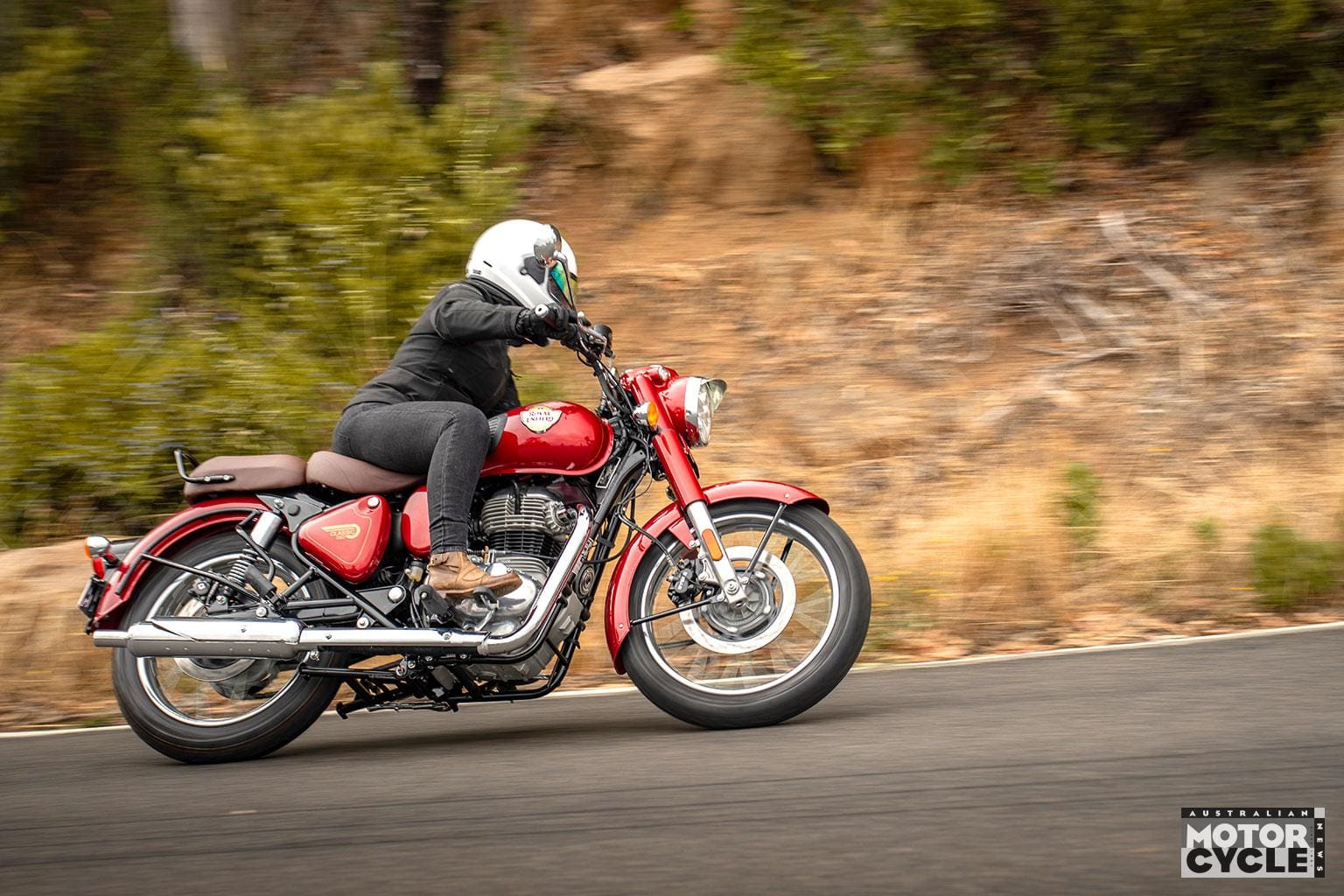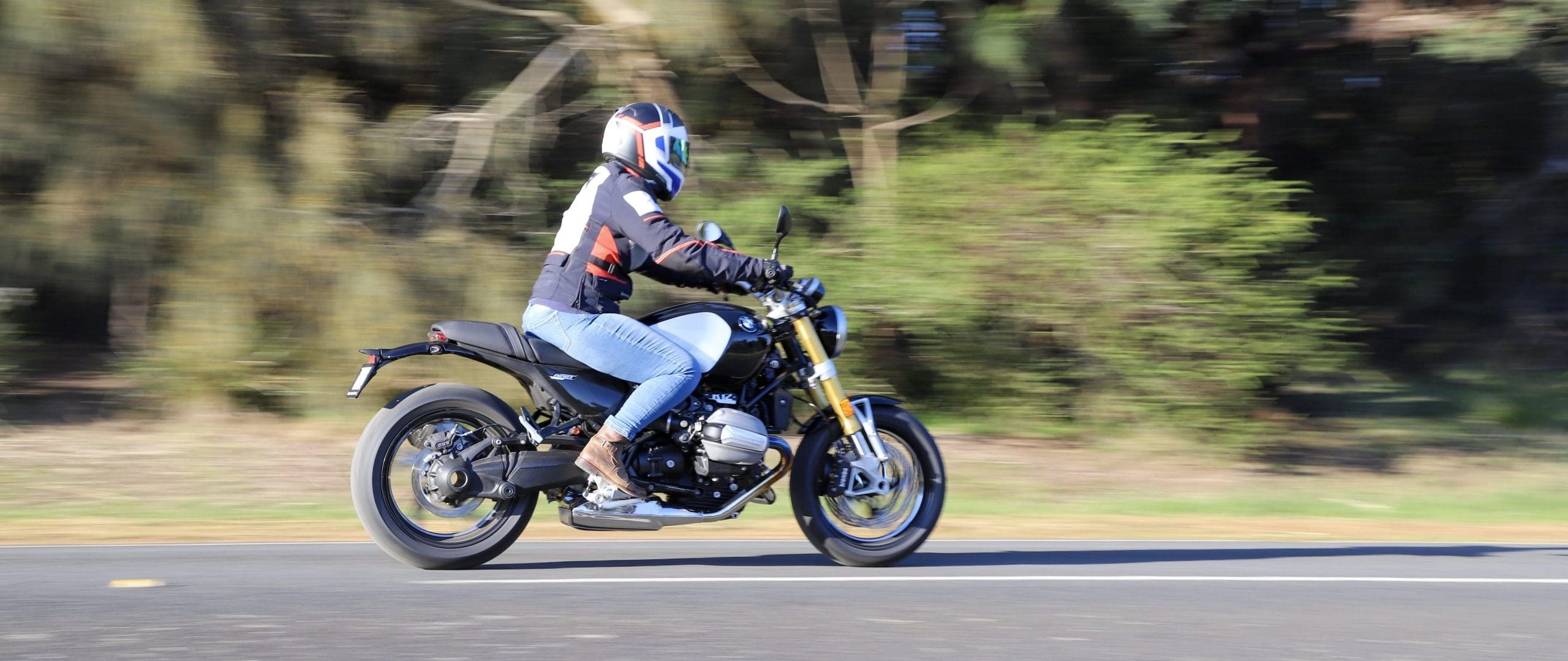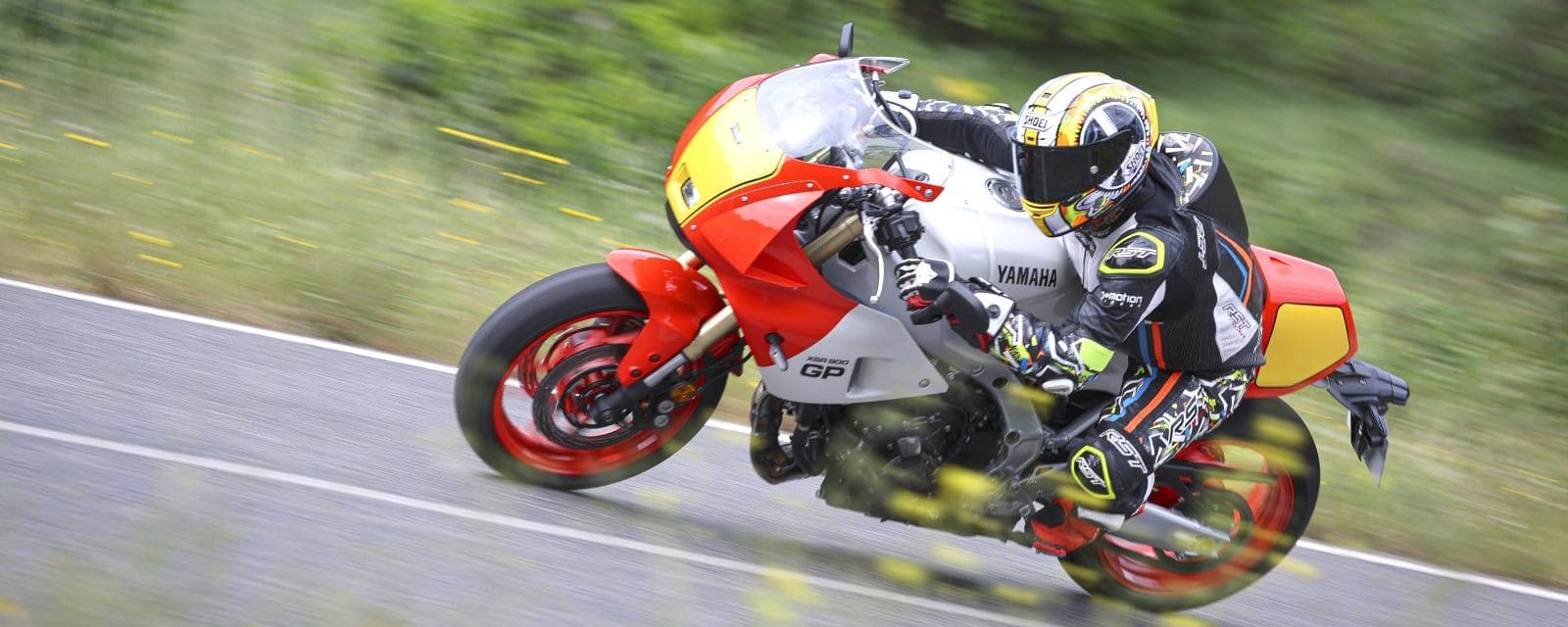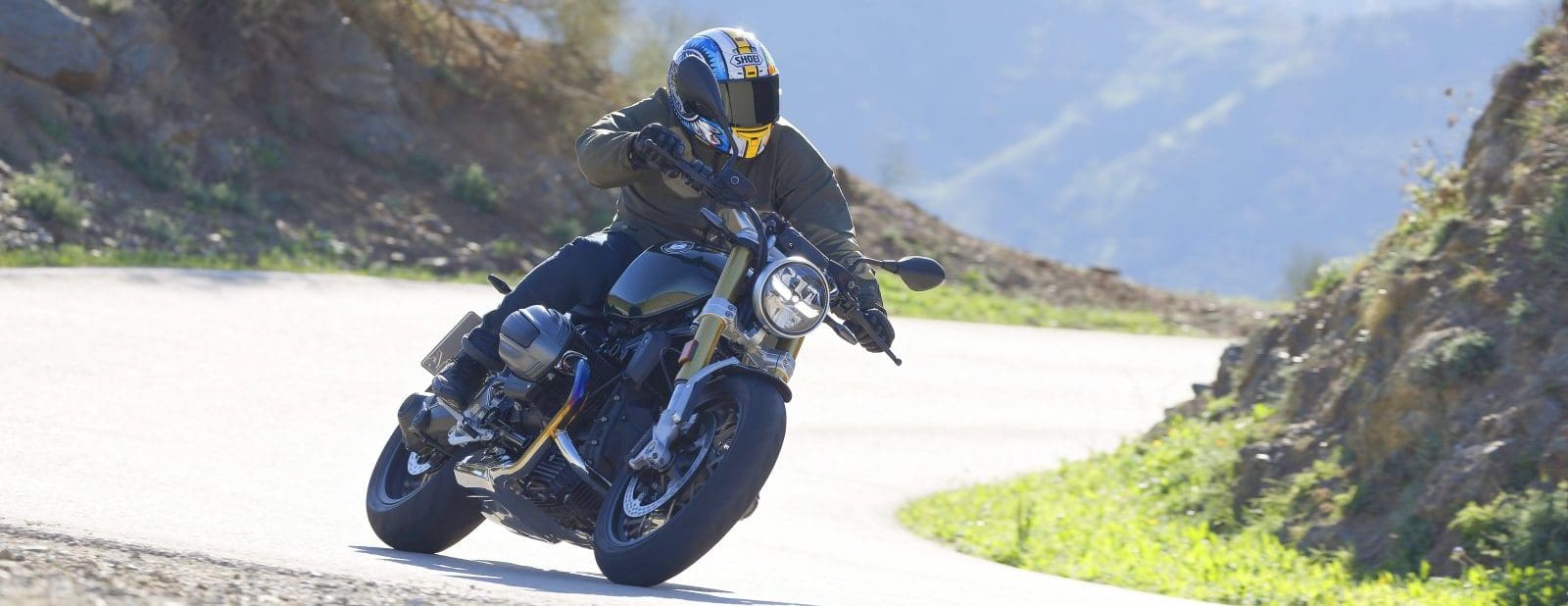The launch of the 2024 Honda GB350 will be no surprise to anyone who kept a close eye on the goings on at last year’s EICMA motorcycle expo in Milan, Italy, with Honda quietly running a renaming broom through its roadbike line-up, presumably to streamline the current model platforms and to make way for new ones.
It started with last year’s CB500 line-up; the CB500 nakedbike got shuffled under the Hornet umbrella for 2024 after the CB750 Hornet was added to the stable, while the soft-roader CB500X became the NX500, presumably to form the start of a road-biased adventure touring range – à la NX650 Dominator – while the CB1000R, CB650R and CB300R assumed the sophisticated neo-retro role.
So even though an all-new authentically retro-styled 350cc nakedbike would be the perfect platform to tug at the heartstrings of those old enough to fondly recall the huge sales hit Honda had in the late 1960s and early 1970s with the original CB350, it simply no longer fits into the new naming regime for 2024.

Enter the GB350. First unveiled in Japan at the start of 2021 as a domestic-only model, the launch of Royal Enfield’s not-dissimilar Hunter 350 saw it exported to India the following year. And at the end of 2023, it landed in Australian dealerships as the latest in an increasingly long list of retro-styled learner bikes, complete with a largely achievable price tag of $6999 (plus on-road costs).
Physically larger than I was expecting, the accessible but substantial nakedbike has enough bells and whistles to hold its own in 2024, but not enough to lose its authentic retro patina. Important safety features, such as two-channel ABS, traction control and a slipper clutch, are included while LED lighting, a centrestand and a really informative instrument cluster further sweeten the deal.
Power comes from what Honda assures me is an all-new purpose-built 348cc air-cooled single-cylinder engine which, on one hand, tells me there must be more models in the pipeline. Honda isn’t going to go to the trouble of designing an engine for a single model. It does make me wonder though why it doesn’t meet Euro 5 emission standards, let alone the Euro 5+ which is taking effect as we speak. But perhaps the authentic retro naked thing isn’t as popular in Europe as it is in our region, so why spend the R&D dollars required to jump through the hoops, if the CB300R is doing the business over in Europe.
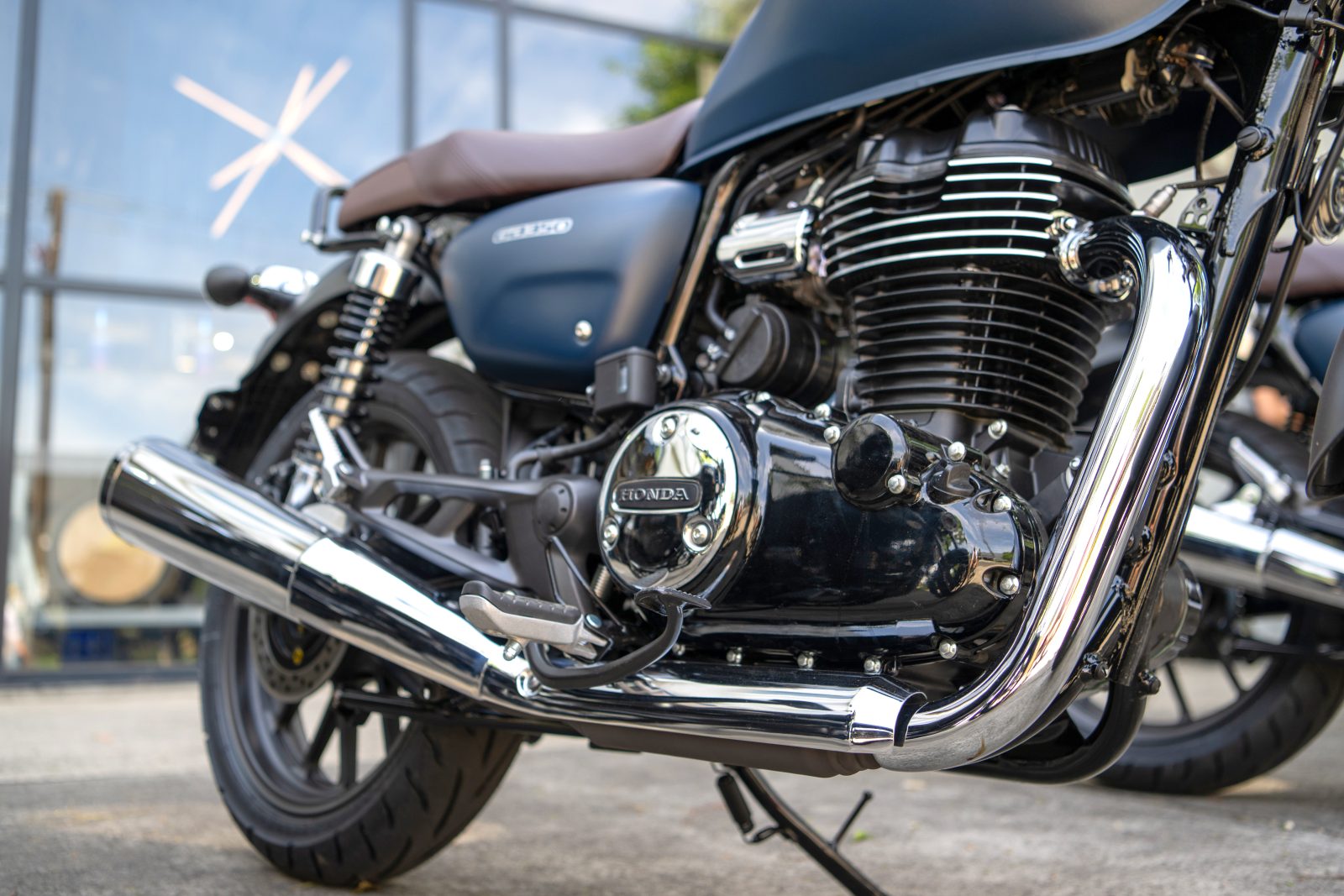
It’s a strong engine and sounds far better than a 2024 model should (probably thanks to not abiding by Euro 5 noise restrictions), but the real accomplishment is the ratios in the gearbox the engine is matched to. These do a good job of convincing you there is more than 15kW (20hp)of power at hand. Geared quite tall, it’s only a five-speed gearbox, but instead of often searching for the phantom sixth gear, I rarely found a need to click into fifth, which in this case is like an overdrive gear.
First gear is quite short, which means you can get off the line in front of the traffic easily and safely, but second, third and fourth are quite tall and really usable. There’s no tacho to refer to but there is an eco function on the dash which lights up to let you know when the engine’s spinning at a rate that’s consuming the fuel most efficiently. The eco light was illuminating when I was sitting on 80km/h in third gear – fourth was too high for 80km/h zones and was really only usable at highway speeds.
The wide ratios meant I wasn’t wasting time dancing up and down the gearbox negotiating inner-city traffic, which is nearly always the case for a small-capacity bike. I was just using the 29Nm of torque from the single-cylinder engine to accelerate cleanly from either second or third gear in nearly all urban situations.
The roominess of this naked bike will make it appeal to a wide range of riders. The large wide seat offers plenty of support and allowed test riders of all shapes find a comfortable arrangement atop the 800mm-high perch. The mid-mounted footpegs are wide and don’t get in the way when your foot is heading to the ground, while the flat, single-piece handlebar sits you in an upright and relaxed position. The brake lever is span-adjustable, however the clutch isn’t, but it’s so light that it really doesn’t matter and that’s coming from someone with child-sized hands.
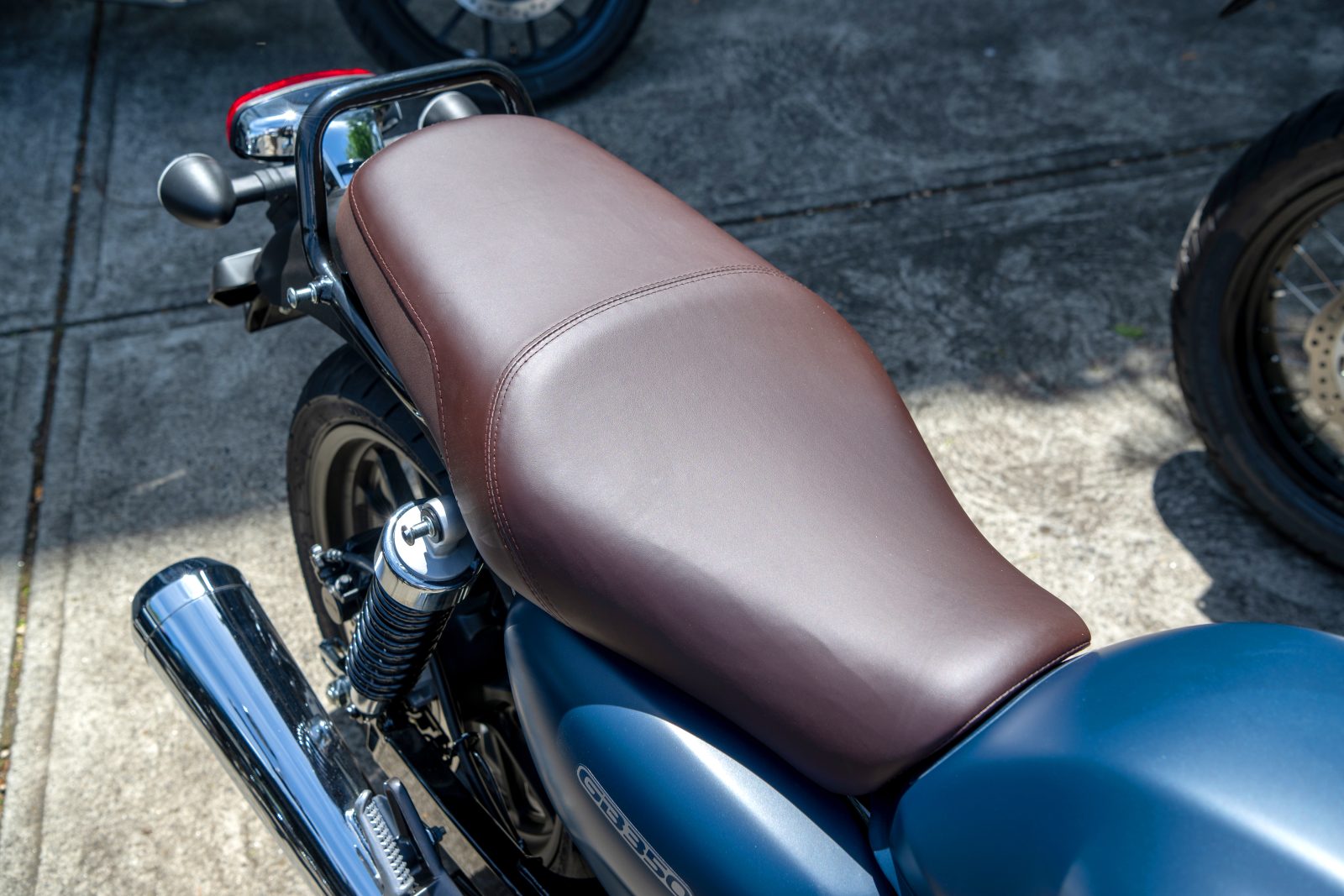
The braking and suspension performance is more than acceptable for a bike at this price point. There’s a single 310mm disc at the front and a 240mm disc at the rear and, given the ultra low mileage the testbikes had on the clock, the already-decent braking performance is bound to improve as the pads bed in.
A pair of preload-adjustable shocks at the rear are matched to a right-way-up 41mm fork at the front. Both ends were well suited to my weight and the type of urban riding the GB is designed for. In saying that, there’s a refreshing amount of tie-down points so a weekend away is definitely not out of the question, and it’ll give you a good excuse to stretch its legs, click that tall fifth gear and take in the surroundings.
The version we get in Australia is the exact same specification as that offered to the Japanese market. This means a 19-inch front and an 18-inch rear wheel, a heel-toe shifter – which can feel a little strange for the first 20 minutes until you get used to it – a centrestand and a traction control system that can be switched off on the fly – not that you’d want to. Okay, so some people might be inclined to seek out some gravel and pull a skid like you did on your BMX as a kid, but once you’ve got that out of your system, I’d expect most riders would – and should – leave it switched on. And the non-switchable ABS system is well refined, as you’d expect from a brand like Big Red.
The simple circular dash is punching well above its weight in terms of the information on offer. Nothing more than a conventional analogue speedo with a small inset LCD screen and a handful of warning lights with two buttons on the topside of the unit to scroll through the information. As well as an odo and two trip meters – often the sum of available info on similarly priced machines – you get average fuel consumption of both trips, kilometre range until empty, battery voltage meter, a fuel gauge, a gear position indicator and a clock. As for the warning lights, they consist of traction control (on or off), ABS, eco mode, indicator lights, a neutral light, high beam and an engine light.
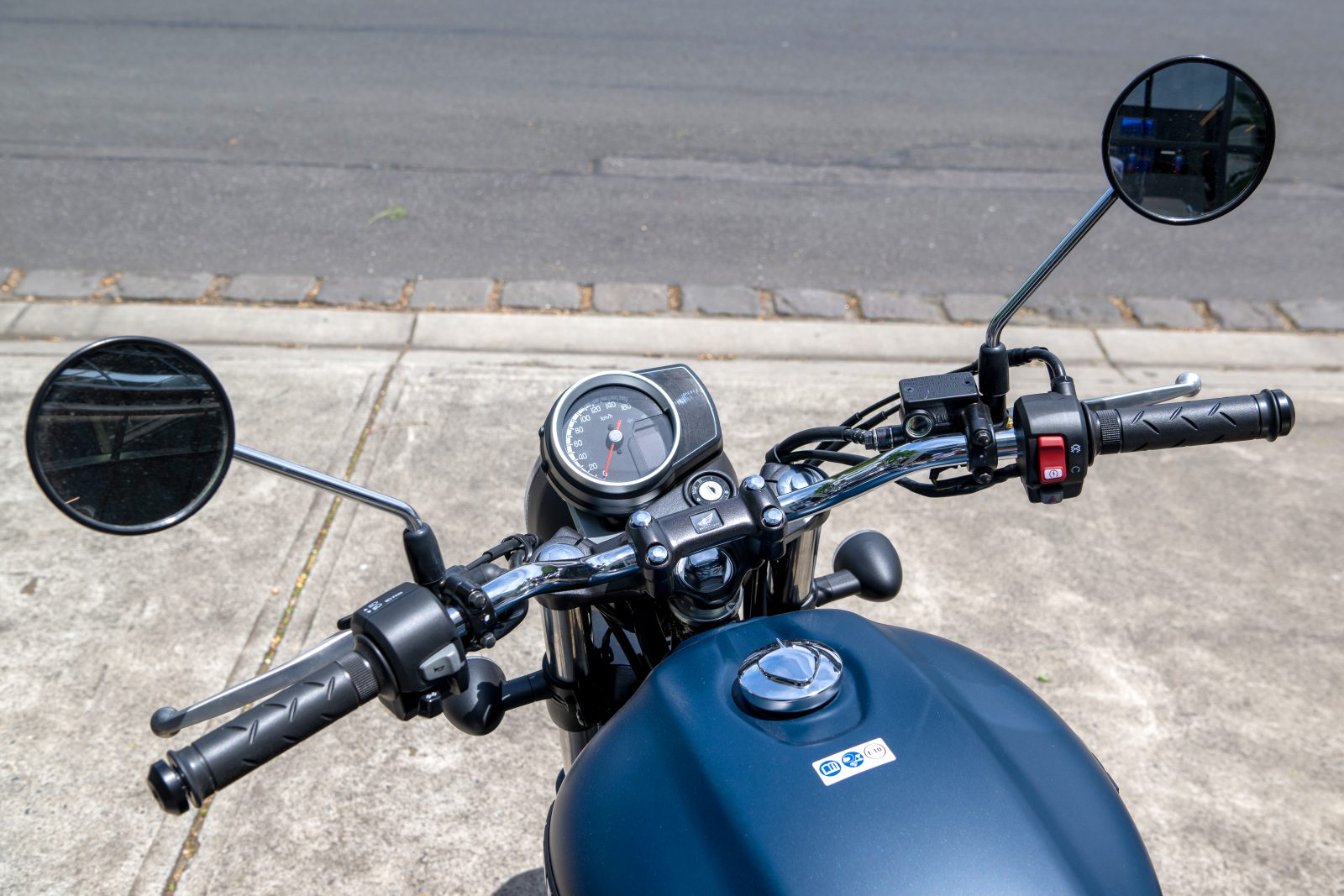
For the $16 price, the optional fork gators should be standard fitment, as should the $85 USB outlet, but other than that it’s hard to fault. Put it all together and it’s a lot of motorbike for the asking price. Convincing retro looks, great performance, Honda reliability and just enough bells and whistles. Oh, and it’s made in Japan, too, which is rare for a bike at this price point these days.
The GB350 is a two-tiered range in Japan, with a sportier GB350S sold alongside the base model. The S version gets a pair of 17-inch wheels over the 19/18-inchers of the standard model, a blacked-out header pipe and silencer, as well as a sportier-looking seat, GT stripes on the side covers and fork gaiters as standard.
Assuming the GB350 does well on the Australian market, I wouldn’t be surprised if the S gets the nod to be sold in Aussie dealerships. But, if indeed there is a new GB platform in the works, surely the likes of Royal Enfield’s hugely popular 650 Interceptor needs a rival, and who wouldn’t love a GB750 parked in their shed?
It’s hard to believe this year marks 55 years since the iconic CB750 broke cover at the Cologne Show. Really, the timing couldn’t be better.
+ Well priced, well made and feels bigger than a 350cc
– A USB charging point would be a practical inclusion

TEST: KEL BUCKLEY PHOTOGRAPHY: ROB MOTT & MATT HAYMAN
SPECIFICATIONS
ENGINE
Capacity 348cc
Type Single-cylinder, DOHC, two valves per cylinder
Bore & stroke 70 x 90.5mm
Compression ratio 9.5:1
Cooling Air
Fueling EFI
Transmission Five-speed
Clutch Wet, multi-plate, slipper
Final drive Chain
PERFORMANCE
Power 15kW (20hp) @ 5500rpm (claimed)
Torque 29Nm @ 3000rpm (claimed)
Top speed 125km/h (est)
Fuel consumption 2.56L/100km (measured)
ELECTRONICS
Type Not given
Rider aids ABS and traction control
Rider modes Not applicable
CHASSIS
Frame material Steel
Frame type Semi-double cradle
Rake Not given
Trail Not given
Wheelbase 1441mm
SUSPENSION
Type Honda
Front: 41mm telescopic fork,
non-adjustable, 106mm travel
Rear: Dual shocks, adjustable preload,
120mm travel
WHEELS & BRAKES
Wheels Cast aluminium
Front: 19 x 2.5 Rear: 18 x 3.5
Tyres Dunlop Arrowmax GT 601
Front: 100/90-19
Rear: 130/70-18
Brakes Nissin
Front: Single 310mm disc,
twin-piston radial caliper
Rear: Single 240mm disc,
single-piston caliper
DIMENSIONS
Weight 181kg (kerb, claimed)
Seat height 800mm
Width 800mm
Height 1107mm
Length 2163mm
Ground clearance 166mm
Fuel capacity 15L
SERVICING & WARRANTY
Servicing First: 1000km
Minor: 6000km
Major: 12,000km
Warranty Two years,
unlimited kilometres
BUSINESS END
Price $6999 (plus on-road costs)
Colour options Navy or black
CONTACT
motorcycles.honda.com.au



